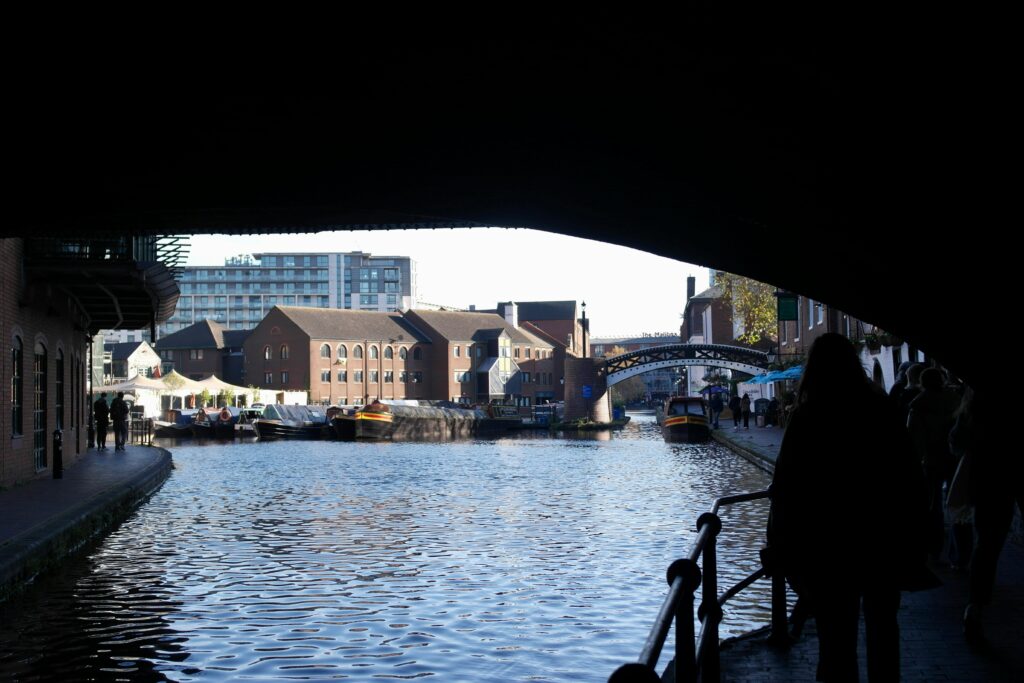
When Was My House Built?
If you’ve ever pondered “When was my house built?”, you’re in good company. Maybe you’re renovating, perhaps you’re researching local history, or maybe you’re preparing to sell – either way, knowing your home’s age can make all the difference.
Your property’s construction date tells you a lot. It affects everything from its character to its value. It can help you understand period features and what sort of maintenance they’ll need.
So let’s explore all the ways to uncover your home’s story – and full potential.
Why knowing your home’s age matters more than you think
Before we dive into the how, let’s consider why you’d want to know when your house was built in the first place:
- For sellers: Buyers will want to know. Period properties command different prices to modern builds, and each comes with different expectations. Transparency about a property’s age builds trust with potential buyers.
- For renovators: Construction methods and materials vary by era. Those beautiful original floorboards in your Victorian terrace need different care to the laminate in a 1990s build.
- For the curious: There’s genuine joy in uncovering your home’s story. Who lived there before you? What was the neighbourhood like when it was first built?
Your step-by-step guide to finding out when your house was built
1. Start with the paperwork you already have
Your title deeds should be your first port of call. These important documents typically include:
- The original conveyance date (when the land was first sold for development)
- The first registration date if your property was built after the 1920s
- Sometimes even the names of the original builders or architects
Don’t worry if you can’t find physical copies – your solicitor or mortgage provider will have them on file.
Pro tip: Look for mentions of “first registration” – this usually happens soon after construction.
2. The £3 trick: What the Land Registry can tell you
For just £3, you can download two crucial documents from the UK Land Registry that might hold the answers:
- The title register – This shows the ownership history of your property
- The title plan – This outlines your property boundaries
Here’s what we’ve learned over our decades of property experience:
- Properties built after 1920 usually have clear first sale dates in these records.
- Older homes might only show later transactions, but these can still provide clues.
- The registry sometimes includes planning permission dates which can indicate construction periods.
It’s the most cost-effective starting point – we always recommend this to anyone who asks us, “How do I find out when my house was built?”
3. Become a history detective with old maps
There’s something thrilling about seeing your home appear for the first time on an old map. Try your local archive office – they may have detailed maps that show exactly when streets were developed. Many are even available online now, through council websites.
Pro tip: Google Earth’s historical imagery can show aerial views through the decades.
4. Your local council knows more than you think
Planning departments keep meticulous records, typically going back to 1948. A quick call or email to your council’s planning office could reveal:
- Original planning application dates
- Builder information
- Architectural plans
- Any major modifications over the years
Some councils charge a small fee (usually £20–£50) for accessing historical records, but it’s often worth it for the peace of mind. We’ve seen cases where this uncovered exact construction dates that weren’t available anywhere else.
5. Read the bricks and mortar like a pro
Your home’s architecture tells its own story if you know what to look for. Here’s our expert breakdown:
Medieval (pre-1485)
- Extremely rare as residential properties
- Wattle and daub walls
- Tiny, irregular window openings
Tudor (1485–1603)
- Distinctive black-and-white timber framing
- Jettied upper floors (overhanging ground floor)
- Decorative exposed timber work
Stuart (1603–1714)
- Shows the change happening from Tudor to Georgian
- More symmetrical designs emerging
- Mullioned windows
Georgian (1714–1837)
- Symmetrical facades
- Sash windows with small panes
- Brick construction with stone detailing
Victorian (1837–1901)
- Bay windows
- High ceilings
- Decorative brickwork and tile patterns
- Original fireplaces in every room
Edwardian (1901–1918)
- Lighter brickwork than Victorian
- Wider hallways
- Simple decorative features
Interwar (1918–1939)
- Semi-detached designs
- Stained glass features
- Art Deco influences in some areas
Post-war (1945–1960s)
- Plain brickwork
- Smaller rooms
- Concrete construction in some cases
Modern (1970s onwards)
- PVC windows
- Open-plan living spaces
- Energy-efficient features
Don’t forget to check roof tiles and bricks for manufacturer stamps – some actually include dates that can pinpoint construction years.
6. Census records can reveal surprising details
For homes built before 1911, census records can be incredibly useful. They show:
- Who lived in your home
- Their occupations
- Sometimes even details about the property itself
Websites like Ancestry.co.uk (free at most libraries) and FindMyPast let you search by address. We know one seller who discovered their home was originally built for a local factory manager in 1892 – a great selling point when they came to move.
7. Neighbours often know more than you’d expect
Long-term residents can be walking history books. They might remember:
- When the street was developed
- If homes were built in phases
- Any major rebuilds over the years
At Sell House Fast, we’ve found this local knowledge often fills in gaps that official records miss. Plus, it’s a great way to build relationships if you’re planning to sell.
8. Check for hidden date markers
Some houses have physical clues:
- Date stones on chimney breasts or foundations
- Builder’s plaques (common in 1930s–50s estates)
- Foundation stones for larger developments
- Dates stamped on internal beams or under floorboards
We know someone who found a newspaper from 1923 under their floorboards – not quite a time capsule, but definitely a revealing find.
What your home’s age means for its value
Now that you’ve discovered when your house was built, what does it actually mean? Every property is individual of course, but here’s a general rule of thumb:
Pre-1940s
- Often command premium prices for their character
- May need more maintenance but appeal to certain buyers
- Sometimes have original features that add significant value
1940s–1970s
- Often more affordable than period properties
- May need updating but offer good potential
- Typically have simpler layouts that suit modern living
1980s onwards
- Usually more energy efficient
- Often have open-plan layouts buyers love
- May lack character but need less immediate work
Why does property age matter when selling your home?
When you come to sell, being able to tell potential buyers when your house was built builds confidence. At SelHouse Fast, we know:
- Buyers make different offers on period properties versus modern homes
- Mortgage lenders consider property age in valuations
- Surveyors look for era-specific potential issues
Having this information ready makes the selling process smoother and helps avoid surprises down the line.
Let us help you move forward, whatever your home’s age
However old your property is, Sell House Fast can make your move simple:
For homeowners who want speed
- Free cash offer within 24 hours
- Completion in a matter of days
- No chain or mortgage delays
For those who want maximum value
- Expert advice on presenting your home’s history
- Help highlighting period features that add value
- Guidance on any era-specific maintenance issues
For everyone
- No estate agent fees
- Dedicated property expert throughout
- Transparent process with no hidden costs
We buy houses of all ages – from Georgian townhouses to brand new builds. No fuss, no complications, just a straightforward sale tailored to your needs.
Ready to find out what your home is worth? Get your free, no obligation cash offer from Sell House Fast today.


